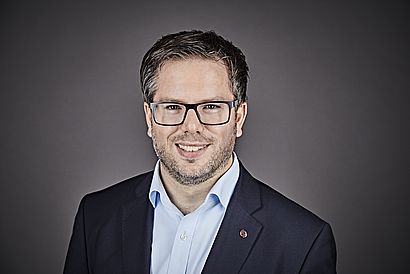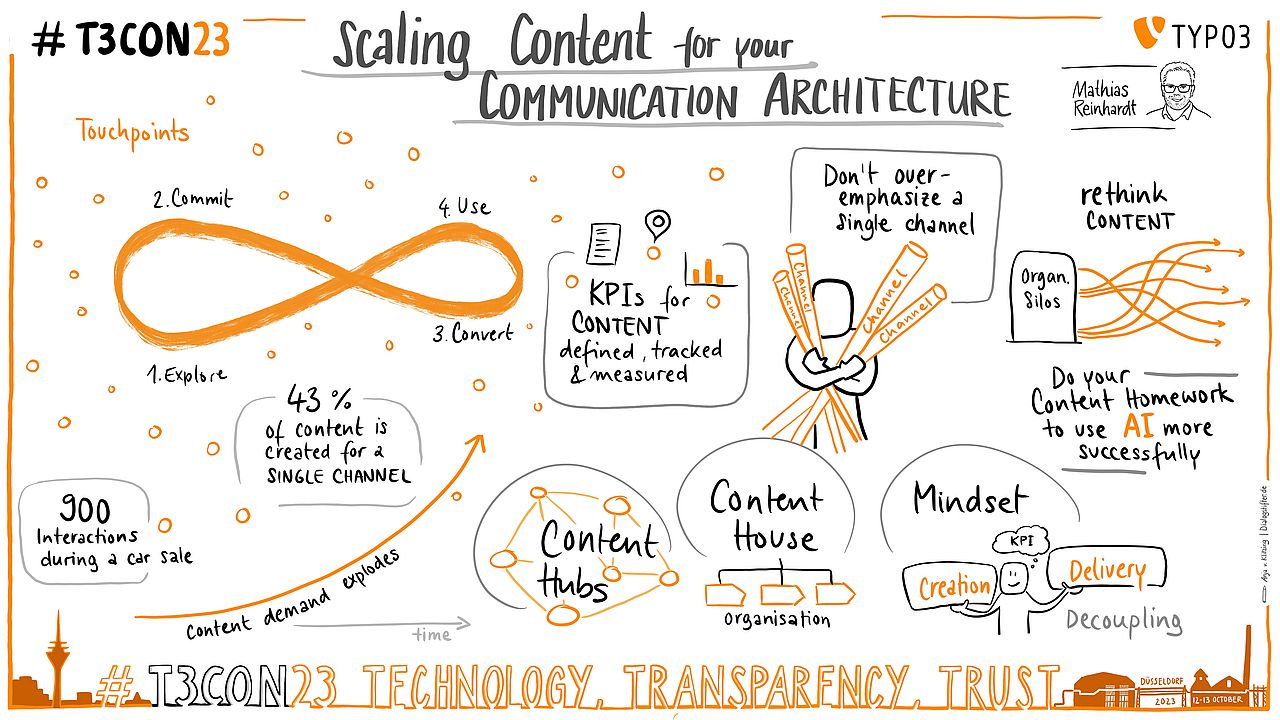
T3CON23 Recap—Scaling Content for your Communication Architecture
As content volumes increase, organizations need to take a much more industrialized, metrics-driven, and centralized approach to content. This requires changes in technology, processes, and mindsets across different parts of the organization. If done right, it also prepares companies to take advantage of AI automation opportunities.
In his T3CON23 talk Communication Architecture in 2024, Mathias Reinhardt addressed the demands of content strategists in the face of an explosion in demand for content. He presented best practices in Communication Management and stressed the risks of overemphasizing a single channel or touchpoint, advocating instead for a holistic, KPI-driven approach to communication.
Read on for a full recap, or catch up on what else you missed at T3CON23.
"Content is the driver for everything"
– Mathias Reinhardt
The content explosion and increasing touchpoints
Reinhardt began by highlighting how consumer journeys are becoming more complex, with the proliferation of digital touchpoints. He noted that as user traffic increases, so too does the number of touchpoints. For example, work at his own agency has shown that the process of buying a car now involves over 1,000 digital content interactions across research, pricing comparisons, dealership visits, and more.
“From my point of view, content is the driver for everything,” Reinhardt stated. He explained that, while technology and user experience are important, content is the critical element needed to move users through a journey to interact with a brand, make a purchase, or use a digital service.
This explosion in content demand stems from the increase in touchpoints, personalized content, new markets, and more. Yet at the same time, marketing budgets are not expanding proportionately. This widening gap is creating a pressing need to find new ways to efficiently manage content at scale.
“If you think about personalized content, we expect more and more content being customized and a one-to-one relationship — so the content explodes. The issue is, the budget does not. If you’re a marketeer, your budget does not explode. So you have to find a way to manage that exploding demand,” he said.
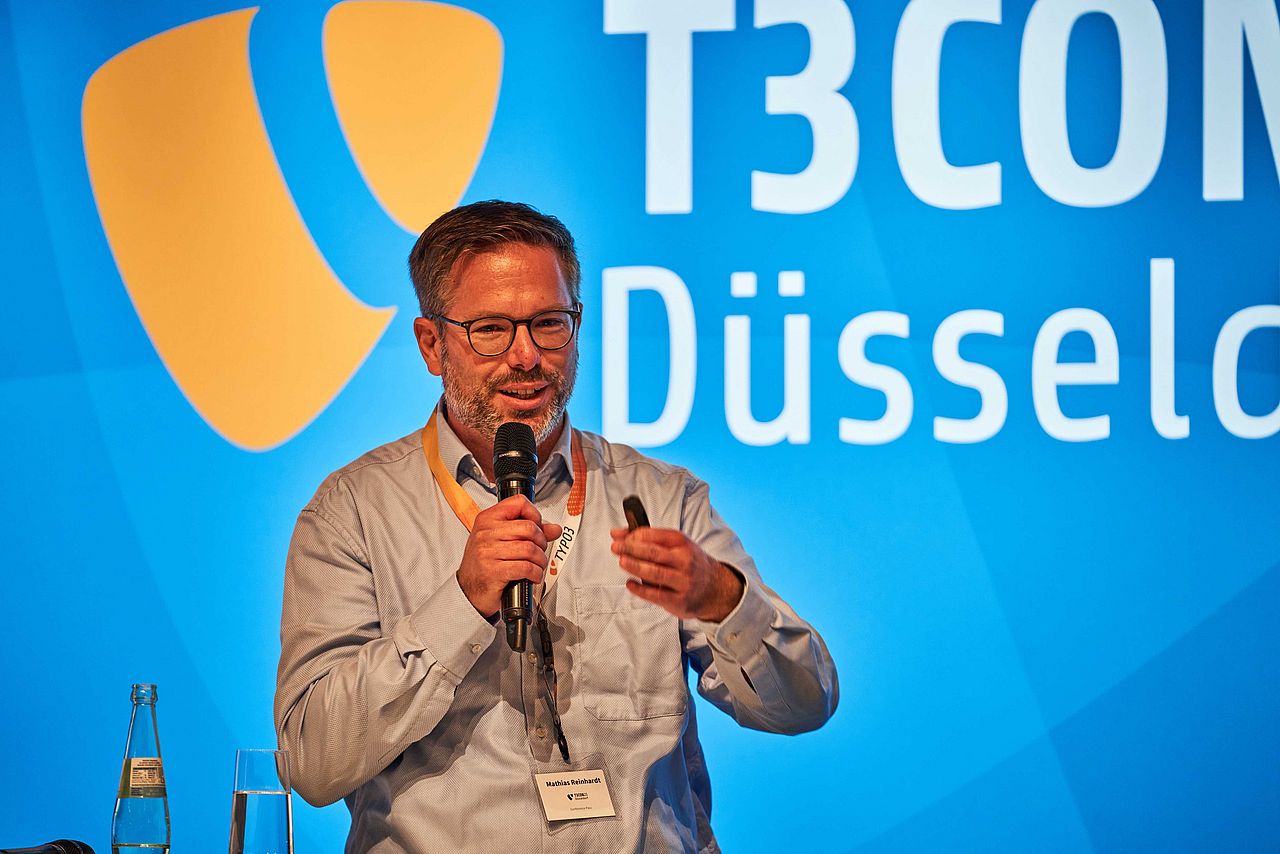
The need to industrialize content production
Reinhardt termed this predicament — managing overflowing demands with limited budgets — the content crisis. To respond to this crisis, he argued that we need a more industrialized approach to content.
However, many organizations are lacking capabilities when it comes to content workflows, planning, and metrics: “They have KPIs on what’s happening on their social channels, but they don’t have KPIs on the content, what they are publishing out there. And they don’t have KPIs on everything that's happening between someone saying ‘I might need content’ to planning, creating, producing it.”
To optimize content operations, Reinhardt called for greater focus on two key mindsets:
- Measurability: Emphasizing the need for stronger analytics.
- Decomposition of content: Borrowing UX principles of breaking down and reusing patterns to create content from templates.
Content hubs and content management systems can offer some help in this regard, but Reinhardt stressed that addressing the organizational side is more important for content scale and sustainability. This means understanding roles, processes, and alignment of internal teams and external partners producing content, and industrialization through structure, measurement, and optimization.
The stakes are high:
“The question to ask is: What content today is not actually presented to users, driving conversion, driving your sales, increasing brand trust, making a service easier? Just because it cannot be organized? Just because there’s no process? Because you don’t have the costs per content atom to produce that content? What conversion potential do you lose by not managing that?”
– Mathias Reinhardt
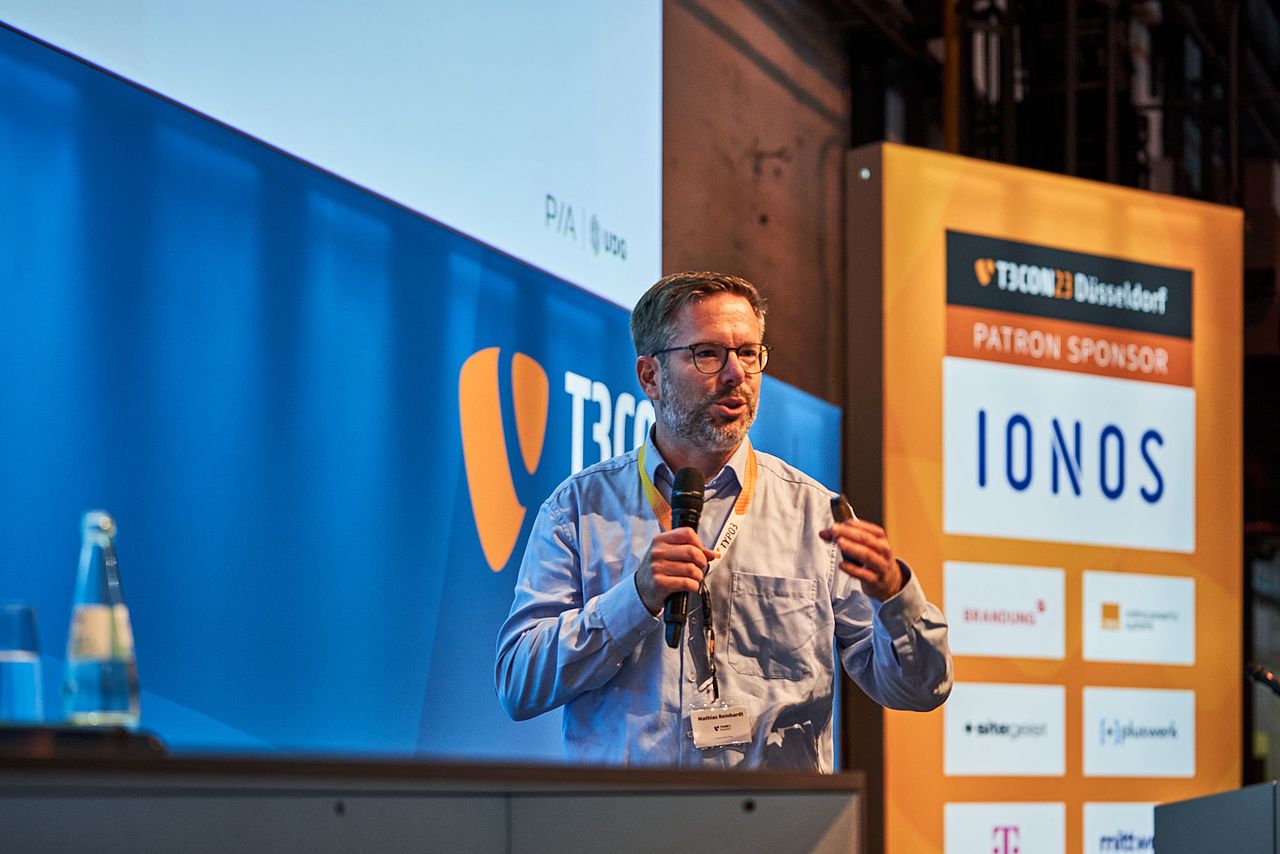
Decoupling creation from production
To help improve internal processes, Reinhardt introduced the concept of decoupling — that is, separating the creative process of content development from the operational side of content production and distribution.
He shared learnings from his experience working across agencies, observing that exceptionally creative people often underperform when it comes to delivering, evolving, or industrializing their ideas. “We see a lot of broken processes in the content phase,” Reinhardt explained, “because the same people that can create great ideas try to roll out that idea on a global level.”
Instead, organizations should “understand that there are people who are good for the creation and people who are good for all the other things that need doing for the content to reach the user.” Separating these functions allows greater specialization. The creatives can focus solely on ideation, while structured production teams handle scale and reuse.
With content as the strategic driver, but budgets still limited, specialization and assembly-line-inspired workflows can help solve the content crisis.
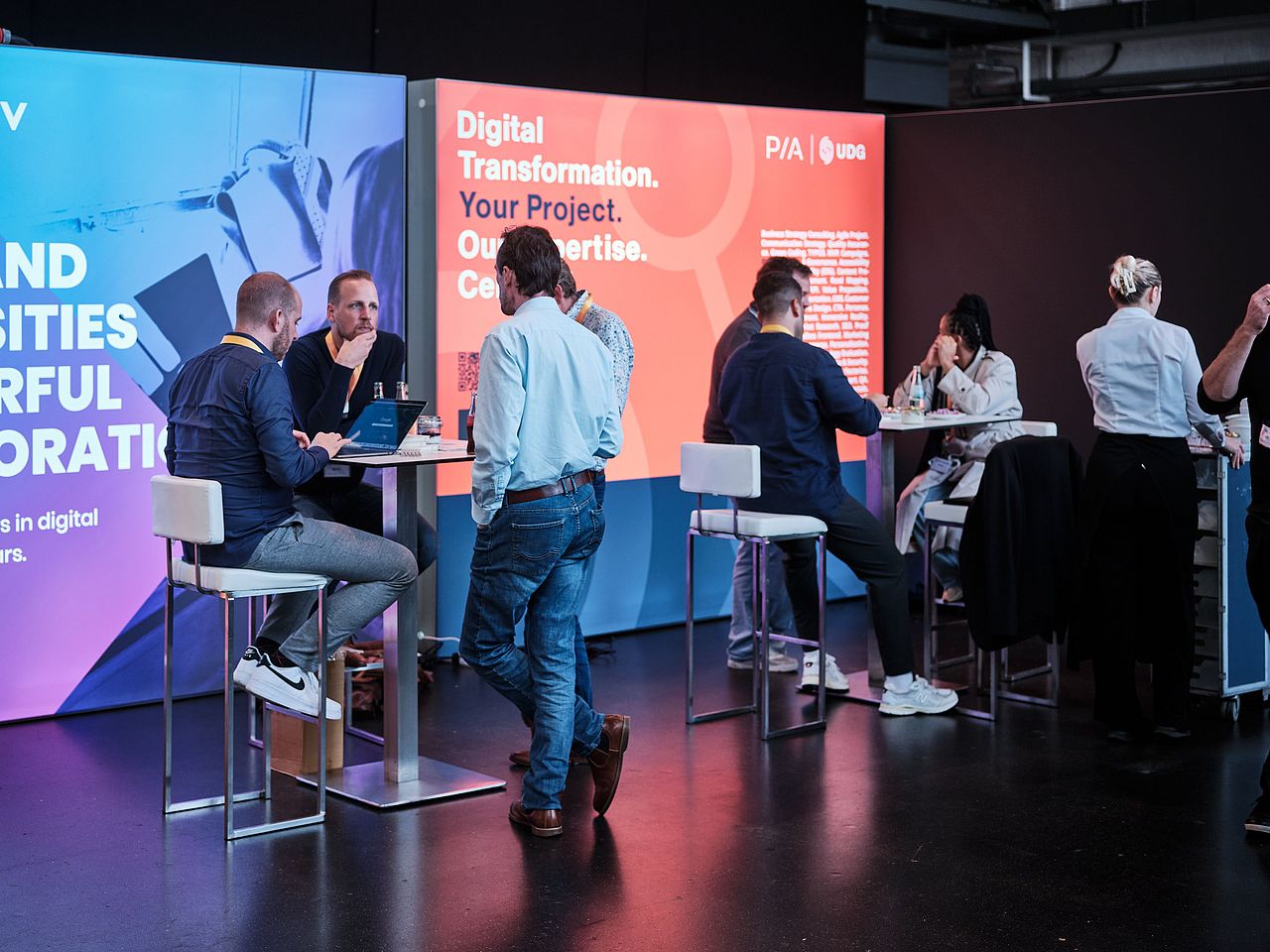
Breaking down silos
A more general concept of decoupling can break down organizational silos. Reinhard pointed to a common problem of limited alignment, where different parts of a company own different touchpoints and channels, with each their own assets, agencies, and technologies.
Reinhard argued for gains in both efficiency and branding by centralizing content workflows across web, social, retail, etc. His examples included joint agency governance models and shared, multi-channel content planning. Breaking down fiefdoms improves leveraging of data, optimizes cost per content item, and ultimately drives conversion.
AI solutions
Does artificial intelligence and automation eliminate the need for many of these organizational and process changes? While acknowledging AI’s promise for content, Reinhard warned those waiting for technology to solve all their problems.
We have already seen early AI benefits in areas like asset production, audience insights, and translations, but “companies who do their content homework will be much more successful in applying all those AI patterns.”
Organizations must have mature workflows, content cost visibility, and translation metrics to fully capitalize on AI — which requires greater coordination on the organizational level: “If you come into an organization, and they don’t have those processes, and they don’t have an understanding of the workflows, of the value streams, of the quantity, of the KPIs — how much content is created, how many translations do you manage per day? How many translations do you source from human beings? How many translations can you already cover fully automatically? If you don’t have those numbers, you will be lost, or you will not be in first place when all those AI technologies come in.”
Ensure to sign up for T3CON24 to see more amazing talks like this one.

